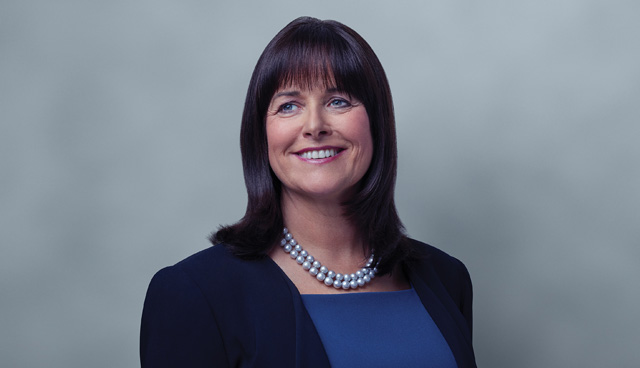Consolidating change in the new normal

Catherine Corcoran is Head of Consulting with RSM Ireland, who have a demonstrable track record of supporting the public sector over the last 20 years. Making Remote Work is a significant strategy which will require both strategic planning and operational excellence to succeed. In this article, Catherine speaks to the need to consolidate and build on changes already enacted with two RSM colleagues taking a deeper dive into salient pillars underpinning effective delivery of remote work: people and technology.
Early 2020 saw not just the onset of Covid-19 but the onset of a period of substantial and unprecedented workplace change. Change that was imperative and immediate. Change that required agility and speed of play. Change that was heretofore almost unimaginable was implemented with minimal forward planning.
The types of immediate challenges the public service faced were:
- the requirement for critical containment activities, such as contact tracing, through widescale redeployments;
- the need to address the limitations of existing technology with the imperative to facilitate remote working;
- the temporary suspension of public services which previously required presenteeism until, where possible, an alternative was conceived. The need for continuous planning to manage increasing backlogs was an on-going requirement;
- a requirement to enable a significant proportion of the 335,000 strong public sector workforce commence remote working; and
- the need to manage hundreds of geographically dispersed “home offices” across the country.
These were significant challenges requiring changes that may heretofore have been unimaginable. Solutions were found to make things work. The public service galvanised itself around the ‘greater good’ bringing out all that is good about Ireland and its citizens.
As we, hopefully, move towards a more stable period the challenge for the public sector is how to effectively consolidate and harness the substantial goodwill and changes that have been affected using a systematic and measured approach, one that works.
On the 15 January 2021, the national remote working strategy Making Remote Work was published by the Department of Enterprise, Trade and Employment. This is built on three pillars, each with core elements summarised as follow:
- Create a conducive environment: a right to disconnect and to request remote work, health and safety and review of tax or financial incentives.
- Develop and leverage remote work infrastructure: the establishment of hubs and reenergising the National Broadband plan.
- Build a remote work policy and guidance framework: creating a shared vision in the sector to promote collaboration and conducting ongoing research on remote working.
All pillars are underpinned by enabling conditions such as mandating the norm for 20 per cent of the sector to work from home/remotely and ensuring equitable treatment of remote and office-based workers.
The challenge for public service organisations lies in organising their operating models to respond to the requirements of Making Remote Work and the ‘new normal’ it aspires to. Similar to any large-scale organisation, the sector requires guidance from central government to promote approaches aligned to long standing sectoral fundamentals such as consistency, fairness, probity, and impartiality. The challenge will be for organisations to implement this in a way that is consistent with the delivery requirements specific to each of these organisations. Anticipating and overcoming barriers will be a central tenet of successfully embedding change. Barriers such as:
- lack of visible leadership support and buy-in;
- maintaining a common purpose or vision;
- effective communication where employees are dispersed;
- early identification and management of resistance or employee relations;
- maintaining momentum and energy in the transition period; and
- avoiding development of counterproductive “subcultures” or sentiments of “us/them”.
A tall order, and one that requires careful and orderly planning. Now is the time to harness and consolidate all the achievements to date, and a good starting point may be to consider two key enablers of change – people and technology. Graham Murphy, Senior Manager with RSM and Terry McAdam, RSM Consulting Partner comment further on these two areas below.
Consolidating change — the people factor
Graham Murphy, Senior Manager in Consulting at RSM, takes a deeper look at a selection of some of the salient people considerations in consolidating changes required to support a remote operating model.
People were critical to the early response to the pandemic and will be equally important in the successful delivery and implementation of 2021 strategy Making Remote Work. To have an effective remote working model, organisations will need to proactively create a conducive environment, supports and systems. There are a multitude of factors to consider, here we focus on four.
- Strategic workforce planning: There is a huge opportunity to harness workforce planning in a very strategic way to ensure the right people, are in the right place at the right time as we design our new normal.
Delivering the new normal will mean that organisations will need a deep understanding of the composition of their workforces. This should be achieved through critical assessment of individual roles, business units and departments for their suitability for remote work and the form of remote work. Done properly, this may also identify barriers to overcome including ineffective processes, sub optimal technology, skills or learning gaps. - Culture: creating mechanisms which ensure espoused organisational culture endures across geographically dispersed workforce. Organisations will need to have deliberate planned interventions to inculcate and sustain their culture. Management should think about making values more visible, introducing mechanisms to promote a culture of conversations, and ensuring organisational inductions truly embed new starters into that culture.
- Policies and procedures: ensuring these align with, and support, a remote work operating model whilst not compromising on longstanding sectoral values. People policies and procedures are a foundation of ensuring organisations function with consistency, fairness, and impartiality of utmost importance within the public sector. There is a huge body of work now in assessing all policies and procedures and their appropriateness for remote working including new policies aligned to emerging codes of practice (such as the right to disconnect). Similar will apply to procedures. It is here that many barriers may emerge as it becomes difficult to find ‘one size fits all’. Introducing successful change may necessitate consultation and compromises, both internally and externally, but are more achievable if proposed changes deliver benefits to all.
- Capability/skills development: ensuring organisations are equipped with the right skills, expertise, and capability to thrive in remote environments which requires both new skills but also reinforcing the old. Managers may require development on the nuances of remote work including inclusive leadership. All employees with remote elements of their role will realise the benefit of development in areas such as personal effectiveness, resilience, presentation skills and communication skills. Other areas of awareness, such as cybersecurity and data protection, will remain vital to safeguarding business operations.
Consolidating change — the technology factor
Terry McAdam is a Technology Consulting Partner at RSM, who considers two technology factors which are both of strategic and operational importance for public sector organisations in delivering a remote operating model.
The technology resources of the public sector have, in general terms, underpinned a very successful transition to remote working over the past 18 months. New and existing services have been delivered to citizens, via both traditional and new operating models and channels. Two key areas will be vital to consolidating change across the public service:
- Data security: the recent data security issues experienced by the HSE has reinforced for us all the importance of securing both the personal data of service users and the commercial data of the state. The trust earned by public sector bodies with the wider population through excellent service delivery and constant and quality communication can be rapidly undermined if people are fearful that their data could be compromised online. It is vital that public sector organisations develop a dynamic IT security strategy which aligns and supports the wider organisational strategy, IT strategy and annual service plans. This document should feature integrated actions to identify and mitigate the evolving risks to data security which arise from many sources. These include infrastructure, application and business model change and the unwanted interest of external and, often, international entities seeking to profit or cause disruption via accessing the data of state agencies. The creation of such a security strategy will require investment in the risk mitigation strategies identified.
However, the impressive digitalisation of service delivery within the public service can only continue if service users, staff and business partners remain assured that the risk of loss or unauthorised publication of their personal or commercial data is highly unlikely. - Common application architecture: since the advent of the pandemic and the forced migration to remote working, the pace and quality of service delivery to users, and indeed the speed of development of new services, has been greatly influenced by the quality of interaction and collaboration between public sector bodies, their staff, their suppliers, and the end users of services. The importance of such communication and collaboration will only grow in the future. It may be beneficial for the public sector to adopt a common set of standards and applications to support such critical activities. For example, at present, it is common for public sector organisations to utilise a variety of remote working tools to support data sharing, video calling, project management or to develop web presences, which can vary considerably in terms of interface and functionality. The adoption of a small set of common applications and standards across the public sector may facilitate collaboration and project/service delivery and create a less complex environment within which public servants, suppliers and service users can all collaborate.
Consolidating change requires an integrated approach
Making Remote Work is an ambitious, progressive, and exciting proposition for the public sector. Undoubtedly, there are limitless opportunities and benefits in achieving same but not without challenges which will co-exist alongside barriers that will need pro-active management.
My colleagues Graham Murphy and Terry McAdam have commented on some critical considerations for organisations to consider across the pillars of people and technology. Naturally, these pillars overlap with the strength and effectiveness of our technology being inextricably linked to the capability and skills of our people.
We are not proposing people and technology should be the sole focus.
To realise and successfully operationalise remote working a holistic and integrated approach is needed across all business pillars and areas. This will include functional areas (such as corporate services, marketing, finance) but also coherent approaches to activities such as business planning and strategy development.
Whilst the pandemic will, hopefully, subside to enable a return to this new normal, it is evident that all sectors are just at the beginning of journeying on heretofore untravelled paths.
T: +353 (0) 1 496 5388
E: ccorcoran@rsmireland.ie
W: www.rsmireland.ie






